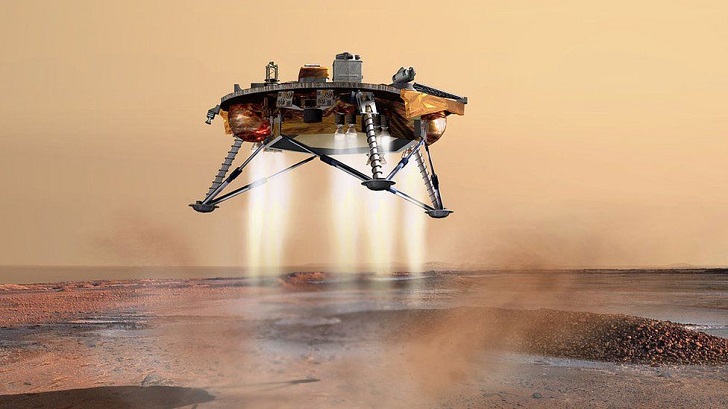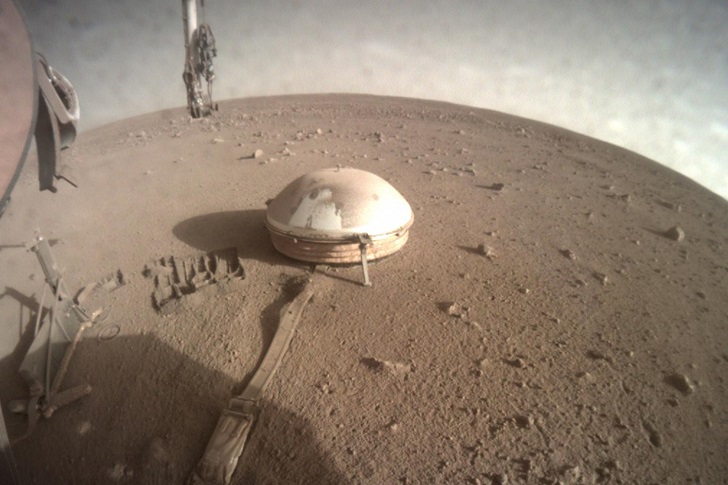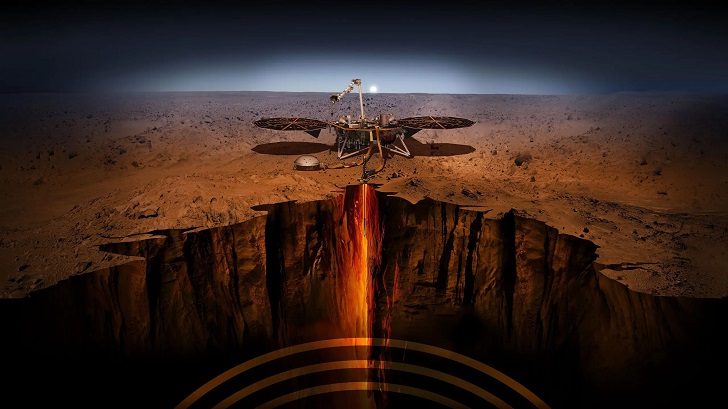On February 23, 2021, a groundbreaking Mars mission ended as NASA's InSight lander shut down. This was a significant mission because it was the first one ever sent to study the deep interior of Mars.
For over two years, InSight has provided crucial insights into the Martian mantle, crust, and core, which has helped scientists understand how rocky planets like our own form and evolve. Let's dive into the accomplishments of the InSight mission and what the future holds for Mars exploration.

NASA/ JPL-CALTECH | The InSight lander was sent to study the interior of Mars and listen for Marsquakes.
The InSight Mission
The InSight mission began on May 5, 2018, when NASA launched the Vandenberg Air Force Base lander in California. After a six-month journey, it reached Mars's surface on November 26, 2018. InSight's primary objective was to study the planet's interior by measuring seismic activity, heat flow, and magnetic fields.
These measurements would help scientists understand how rocky planets develop and how they differ from one another. In the two years that InSight operated on Mars, it provided valuable data on its geological composition, tectonic activity, and other factors.
Accomplishments of the InSight Lander
The InSight lander was equipped with several sophisticated tools to accomplish its mission. One was the Seismic Experiment for Interior Structure (SEIS), a highly sensitive seismometer that could detect quakes and vibrations caused by meteorite impacts. By doing this, it could create an image of the Martian interior that reveals the composition and structure of its layers.

NASA/ JPL-CALTECH | NASA's InSight lander opened a window into the "inner space" of Mars
Another tool was the Heat Flow and Physical Properties Probe (HP3), designed to drill down into the Martian soil and measure its heat flow. These measurements were important in determining how much heat the planet loses over time and how much radioactive material is in the Martian mantle.
Reasons for Shutdown
InSight's shutdown was primarily due to technical difficulties. The lander's solar panels were losing power due to Martian dust accumulating on them, reducing their efficiency. InSight's batteries were not charging adequately, and the lander's instruments were shutting down to conserve power.
NASA has tried several methods to clear the dust off the solar panels, such as shaking them, using the lander's scoop to dust the panels off, and even using wind from the lander's arm. Sadly, these were unsuccessful, and the mission had to end.

NASA/ JPL-CALTECH | After making groundbreaking discoveries about the mysterious interior of the red planet, the InSight lander's mission has officially ended
Lessons Learned and Future Mars Missions
The InSight mission has given us valuable lessons in Mars exploration. For one, it has shown us the importance of having sufficient power and protection for the spacecraft's instruments and that dust can be a severe problem on Mars. Additionally, it has demonstrated the need for resilience and adaptability in such missions.
NASA has several upcoming missions for Mars that will build on the achievements of the InSight mission. These include the Mars 2020 mission, which will look for signs of past microbial life on Mars, and the Mars Sample Return mission, which will bring back samples of Martian soil and rock for analysis.








